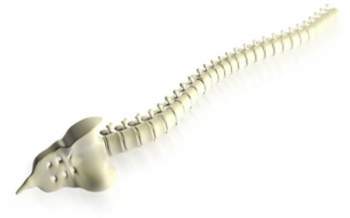
Spinal Cord Injuries

A spinal cord injury (SCI) is classified as a type of injury that results from damage to any of the following components of the spinal cord, such as the spinal cord itself, vertebrae, spinal nerves, or intervertebral disks. Although there exists the common misconception that the spinal cord and the back are interchangeable, they are not. While the human back is comprised of bones, the spinal cord is a far more complex construct, consisting of highly-specialized nerves, tissue, and bones.
What is the Spinal Cord?
The spinal cord consists of bundled nerves, cells, tissues, and disks, which – in addition to the human brain – comprise the human nervous system. The neural circuitry located within the spinal cord is responsible for the transmission of movement and sensation within the human body.
The vertebral column houses the spinal cord, protecting it from immediate contact, which would otherwise damage it due to its delicate construct. The spinal cord is located running downwards the human body, beginning at the base of the brain and ending at the base of the back. Although there have been momentous advances in spinal cord research, there still exist complexities due to spinal cord injuries that modern science has yet to master.
Spinal Cord Injuries
Spinal cord injuries are amongst the most traumatic injuries that can be sustained by the human being, due to the fact that the spinal cord is responsible for a majority of the human being’s bodily functions, operations, and stasis. As previously stated, the delicate construct of the spinal cord allows for it to be damaged quite easily under specific circumstances. There exist two primary types of spinal cord injuries:
1. Degenerative spinal cord injury is classified as acquired diseases, syndromes, or deficiencies that contribute to the degradation and/or damage of the spinal cord. In a majority of cases, these types of spinal cord injuries are categorized as infectious diseases. Examples of these spinal cord injuries are meningitis, polio, and muscular atrophy. The contraction of these diseases, as well as subsequent spinal cord injury resulting from them, is more difficult to determine than blunt, direct, and physical spinal cord injuries.
2. Physical spinal cord injury results from impact – and subsequent damage resulting from that impact – to the spinal cord; the results of which can result in spasms, pain, loss of motor skills, loss of movement, and paralysis.
Spinal Cord Injury Recourse
Although there exists no absolute result or recovery standard under the umbrella of spinal cord injury, individuals who have sustained such injuries have experienced a multitude of results ranging from full recovery to quadriplegia. As a result of spinal cord injury, months – and sometimes a lifetime – of therapy and medical care is necessary to ensure the survival of the victim.
Due to the drastic alterations of an individual’s quality of life resulting from spinal cord injury, those suffering from spinal cord injury are encouraged to examine the details of their case with a legal professional. Although recovery is never certain, in the event of negligence or fault, medical compensation – as well as compensation for loss of quality of life - can be attained.
NEXT: Tort





















